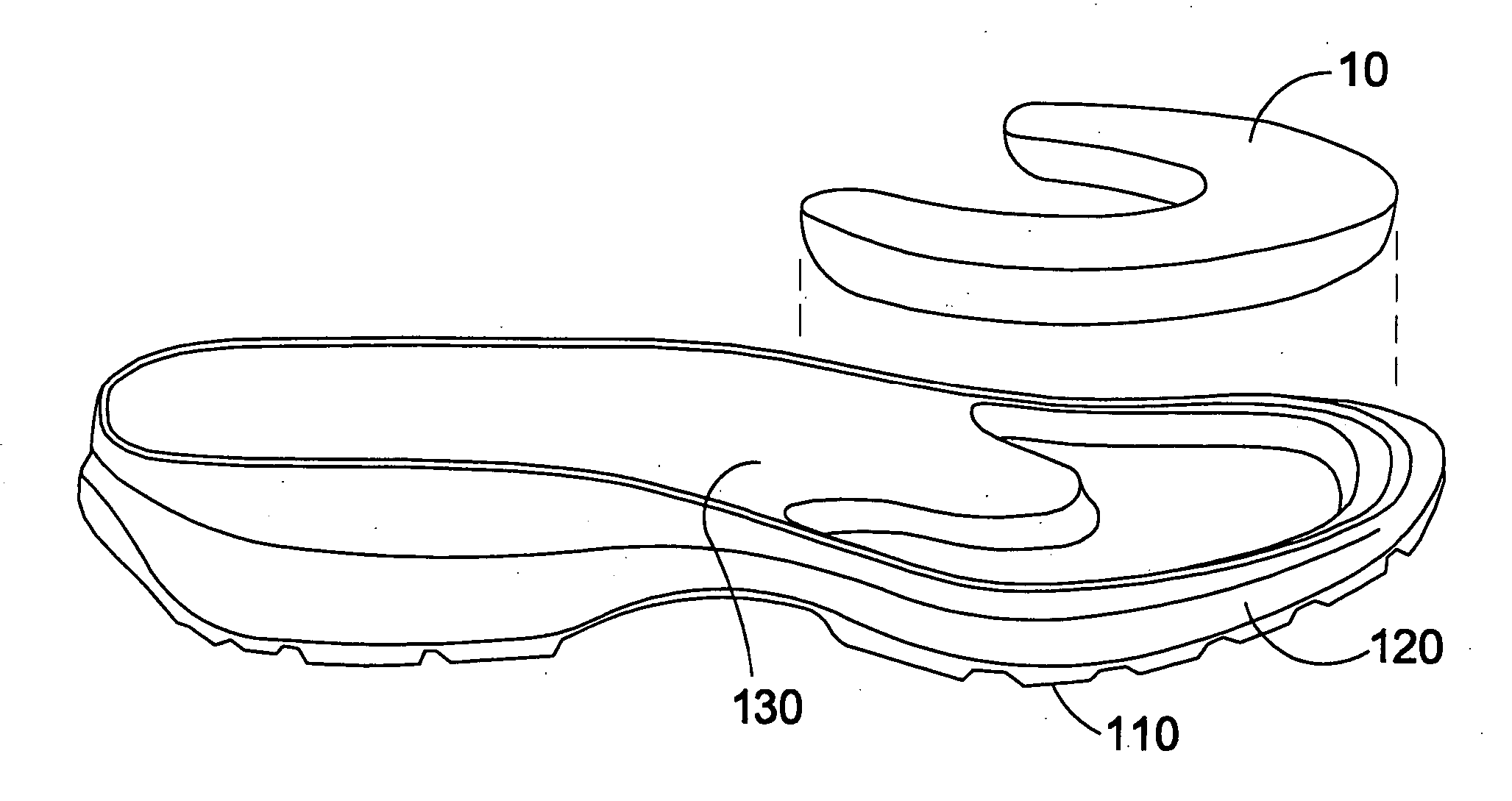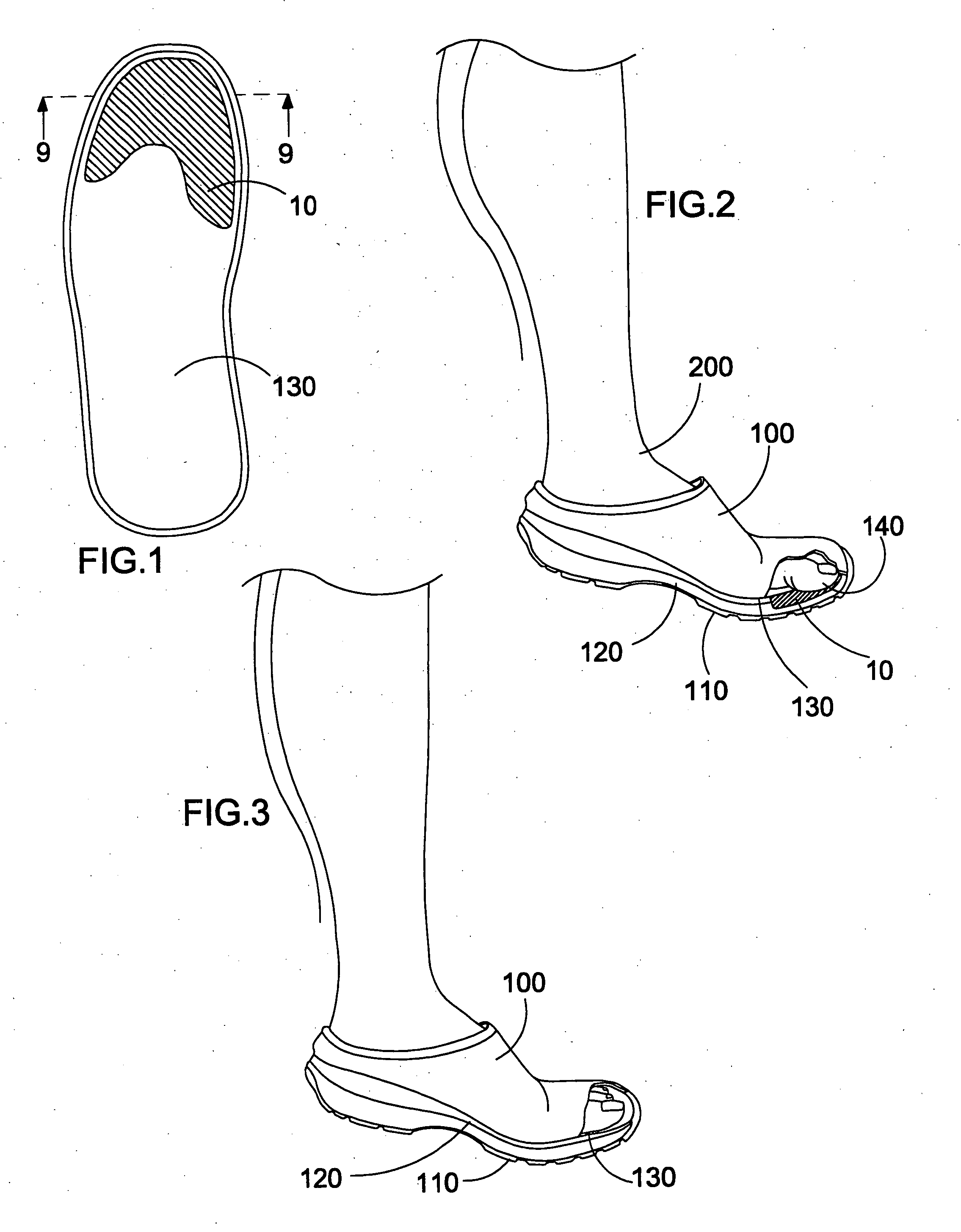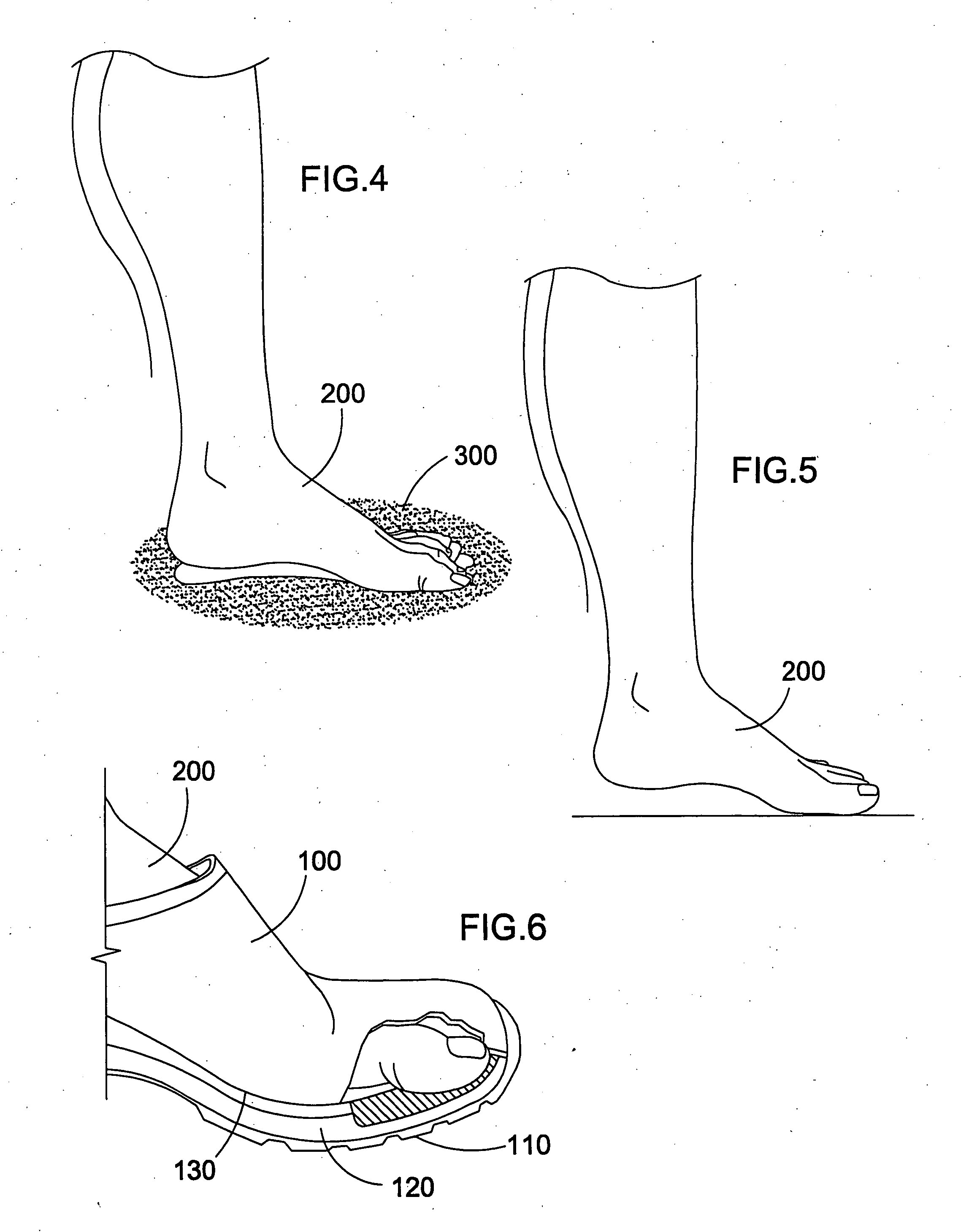While such therapies provide some relief from gait-induced distress symptoms, they are largely ineffectual in re-establishing natural gait.
Because natural gait is biomechanically impossible for any shoe-wearing person.
Natural gait and shoes are biomechanically incompatible because all shoes automatically convert the normal to the abnormal, the natural to the unnatural.
And no therapy or mechanical device, no matter how precisely designed or expertly applied, can fully reverse the gait from wrong to right.
In shoe-wearing societies a visibly faulty gait can often be corrected and made normal, but it can never be made natural as long as conventional shoes are worn.
If these adjustments are sustained over prolonged periods, or by habitual use of higher heels, as is not uncommon, the strains and stresses become chronic, causing or contributing to aches of legs, back and shoulders, fatigue, etc.
In medium to higher heels, due to the reduced base of the
heel top-lift, the line of falling weight shifts, causing a wobbling of the less-secure
ankle, which tilts medially.
The natural plantar path of the step sequence—
heel to
lateral border to ball to big toe (hallux) and push-off—is forced to shift, further affecting natural gait because the toes are restricted and unable to dig-in or claw-in.
Thus a shoe
heel of any height sets in motion a series of gait-negative consequences, making natural gait—meaning the
barefoot form—impossible.
The thicker the sole, such as on sneakers or work boots, or the stiffer the sole, the greater the toe spring needed because of lack of shoe flexibility.
This not only imposes undue stress on the heads, but also forces an unnatural alteration of the
gait pattern itself.
There are several built-in design faults with most commercial lasts, but two in particular have relevant influence on gait and
calf muscle development.
This is the prime reason why virtually all shoes go out of shape with wear—because foot and shoe are mismated.
If, because of this conflict, the foot cannot function naturally inside the shoe, it cannot take a normal or natural step.
However, the combination of the foot's heat,
moisture, and pressure forces the filler material to compress and “
creep,” deforming its original flat surface.
Yet, in only a few thousand years, and with one carelessly designed instrument, our shoes, we have warped the pure anatomical form of human gait, obstructing its
engineering efficiency, afflicting it with strains and stresses and denying it its natural grace of form and ease of movement head to foot.
Without them we would lose equilibrium and become disoriented.
Yet, much of it is denied us because of our thick-layered, inflexible shoes that shut off a considerable amount of this electromagnetic inflow and our sensory response to it.
He writes, “Modern shoes give good wear, but they also impair the foot's sensory response to the ground and earth, affecting the
reflex action of the foot and leg muscles in gait.
However, when several
layers of shoe bottom materials are packed between foot and ground, a certain amount of sensory blockage is inevitable, and the gait loses some of its natural energies and functional efficiency.
However, such prior shoe sole support systems primary objective and function is to provide
cushioning for comfort and shock absorption and do not provide the toes the ability to flex down ward or provide grasping-gripping motion or improve or induce
calf muscle tone development in a manner similar to walking on sand barefooted.
Other prior systems provide support for the heel or hind foot and at the arches or mid foot or at the ball of foot with deformable flexible materials for
cushioning and shock absorption by creating a dense area of material for padding sometimes as thick as 20 mm at those points and some have
cushioning materials through the
entire foot, but none permit the toes to bend downward in a grasping gripping motion and none have a thick layer of deformable material only below the area where the toes will rest.
Further, none provide for a deformable flexible material or deformable liquid or gel built inside a chamber or cavity engineered into the shoe sole and deep into the mid-sole with a deepness of at least 6 mm in a contoured area underneath the toes shaped around the upper border of the ball of the foot and / or starting right below and including the ball of the big toe (1st metatarso-phalangeal joint) and the other digits (lesser metatarso-phalangeal joints), that will permit the toes to flex and bend downward in a grasping motion in a fashion similar to the effect of walking on sand giving mobility and grasping action to the toes nor will they permit the toes to bend downward to a degree enough to induce contractions to stimulate
calf muscle development and growth.
 Login to View More
Login to View More  Login to View More
Login to View More 


